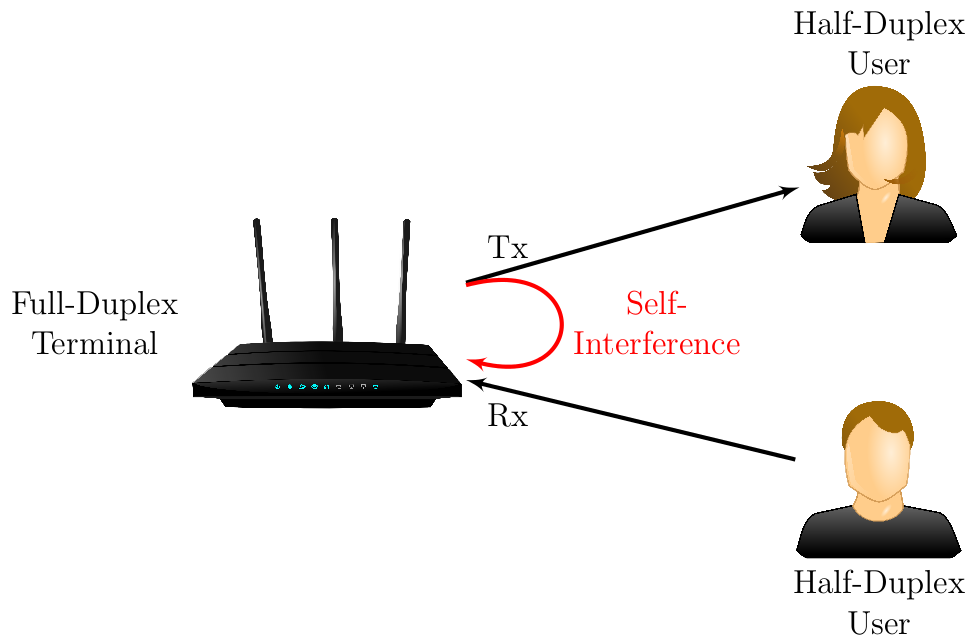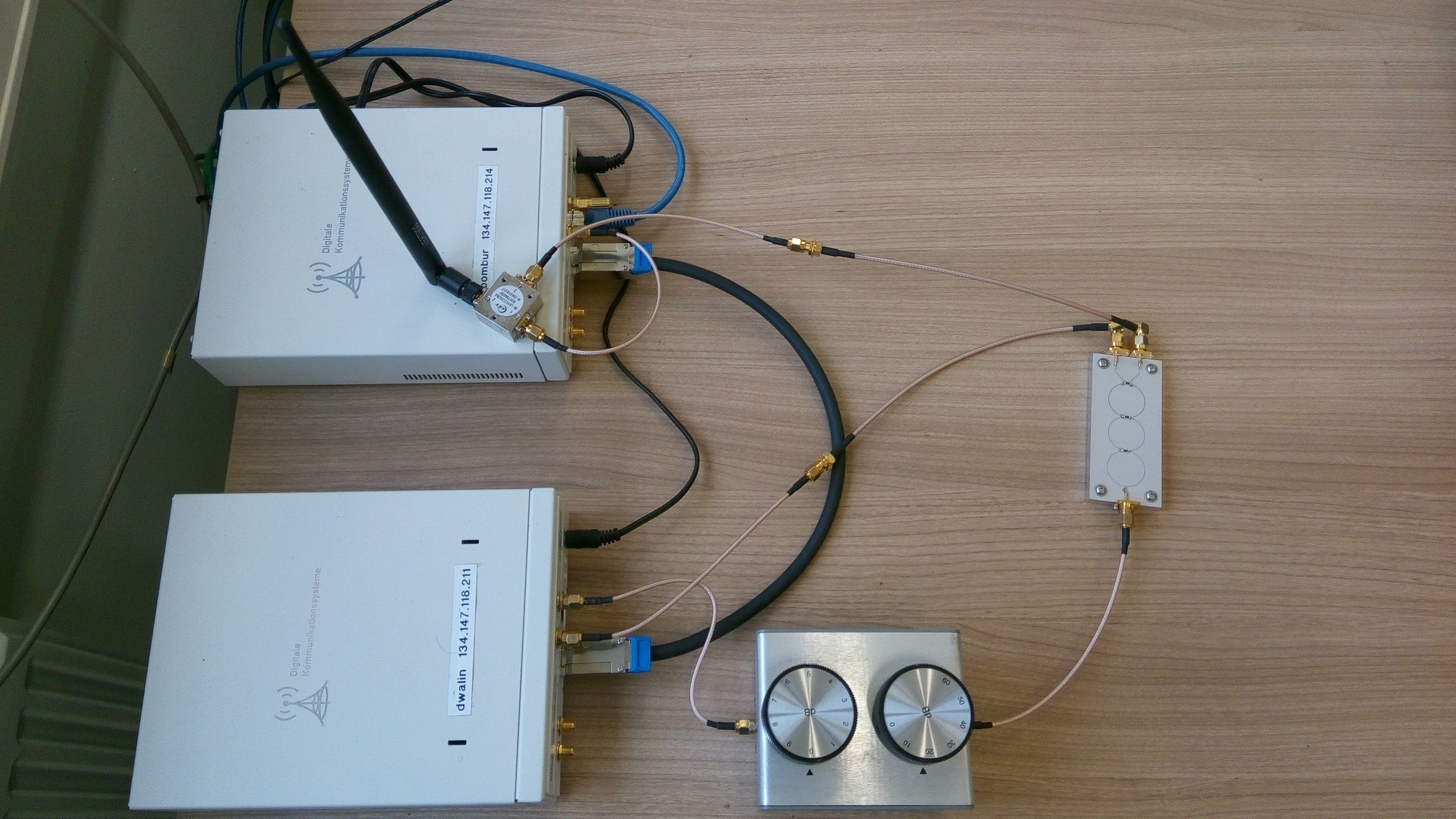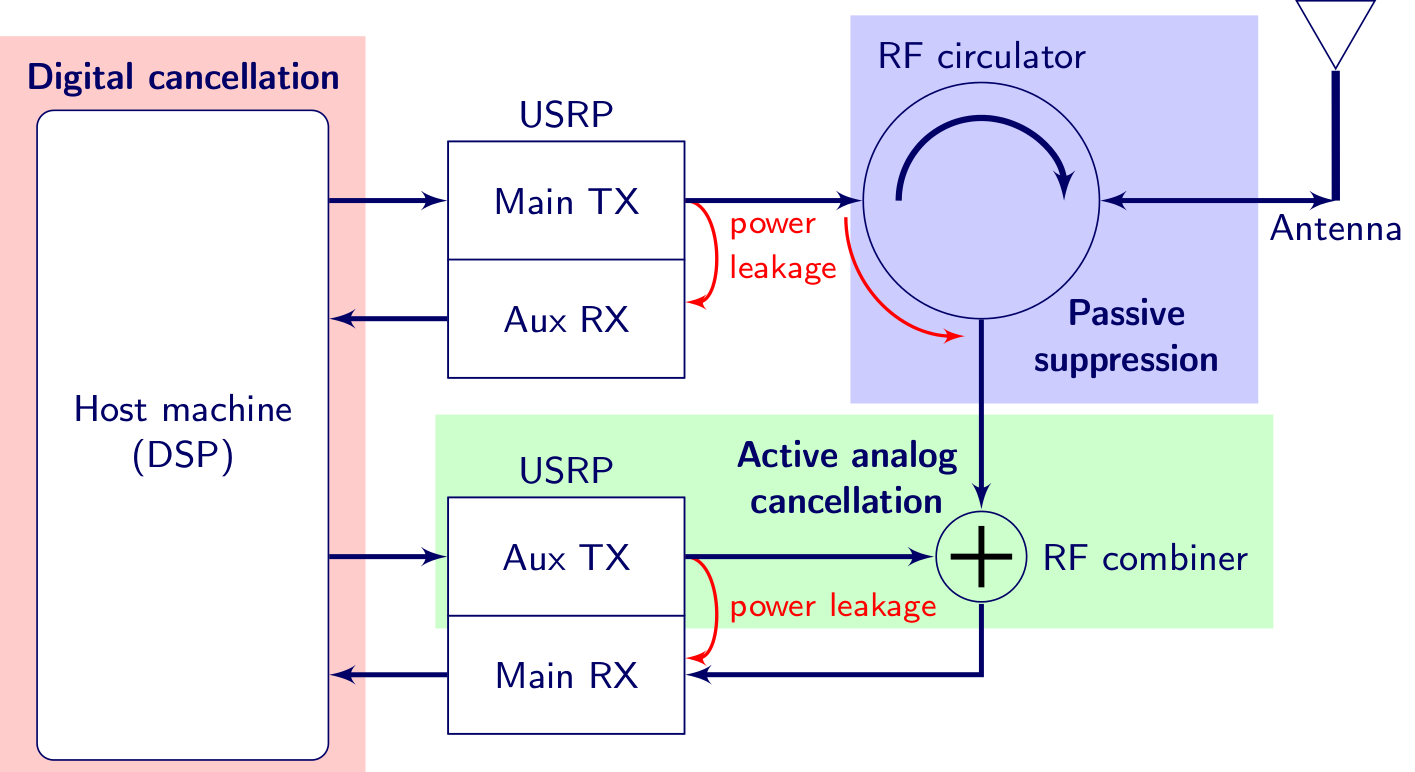
In-band, full-duplex communication (IBFD) enables transceiver terminals to transmit and receive at the same time on the same frequency band. The technology offers the potential to double spectral efficiency (bits per sec and Hz) without further bandwitdh needs. Since future communication standards like the upcoming 5G demand high throughput advancements, the IBFD technology can help to achieve this goals. On higher network layers, IBFD reduces collision problems and can provides features like instantaneous feedback. Furthermore, since some applications and standards require constraints in short time delays, IBFD deployment allows for faster response times
The chair of Digital Communication Systems has a long experience in theoretical models regarding full-duplex capablility. The benefit of deploying full-duplex nodes has been investigated with information theoretical tools for two-way and multi-way wireless networks. In general, the performance gains are significant when a full-duplex transmission mode is enabled.
To be more precise, lower and upper bounds on the capacity, i.e., the highest rate which is reliably achievable, have been derived in for the two-way relay channel. The impact of the full-duplex capability has been studied. Assuming that the self-interference has been canceled completely, it has been shown that a simple quantize-and-forward strategy achieves the capacity within a constant gap of 3 bit. This result has been generalized to multi-way, as well as to MIMO channels. In another work, optimal resource allocation and beamforming strategies have been investigated and it is shown that a joint optimization over the eigenmodes of the MIMO channel is required.
For practical evaluation, a prototype based on USRP devices is under development in the lab of the chair. This setup is going to aid in verification and testing of theoretical results in practical scenarios.

The challenging aspect of IBFD is the self-interference occuring at the receiver, since the transmitter power level is many orders of magnitudes higher than the desired received power from a distant terminal. In the RF circuits, RF impairments like phase noise or non-linearities change the structure of incoming and outgoing signals, therefore cancellation of "known" interference signals is not trivial. Various methods and techniques for practical setups have been proposed, and the key to a solution is the combination of several types of interference cancellation methods. The main principal techniques are
Passive suppression
Active analog cancellation
Digital cancellation
For passive suppression, the isolation between the transmit and receive paths is increased at the hardware level. Active analog cancellation usually requires some power to invest, such that the self-interference is subtracted from the received signal. Finally, digital cancellation is implemented by signal processing in the digital domain.
The testbed in the chair's lab comprises all three stages of cancellation.

The IBFD prototype successfully performs communication by OFDM modulation, where the physical layer is based on IEEE 802.11
A. Sabharwal, P. Schniter, D. Guo, D. W. Bliss, S. Rangarajan, and R. Wichman, “In-band Full-duplex Wireless: Challenges and Opportunities,” arXiv preprint arXiv:1311.0456, 2013.
D. Bharadia and S. Katti, “Full Duplex MIMO Radios,” in Proceedings of the 11th USENIX Conference on Networked Systems Design and Implementation, ser. NSDI’14, 2014, pp. 359–372.
E. Everett, A. Sahai, and A. Sabharwal, “Passive Self-Interference Suppression for Full-Duplex Infrastructure Nodes,” IEEE Transactions on Wireless Communications, vol. 13, no. 2, pp. 680–694, February 2014.
D. Korpi, T. Riihonen, V. Syrjala, L. Anttila, M. Valkama, and R. Wichman, “Full-Duplex Transceiver System Calculations: Analysis of ADC and Linearity Challenges,” IEEE Transactions on Wireless Communications, vol. 13, no. 7, pp. 3821–3836, July 2014.
S. Sivadevuni | A. Sezgin | .
. | A. Sezgin | Marius Pesavento
. | . | A. Sezgin
. | Amr Elbassiouni | A. Sezgin
A. Chaaban | A. Sezgin
. | Gerald Enzner | A. Sezgin
. | A. Sezgin
A. Chaaban | A. Sezgin | D. Tuninetti
A. Sezgin | A. S. Avestimehr | M. Amin Khajehnejad | Babak Hassibi
A. S. Avestimehr | A. Sezgin | D. Tse